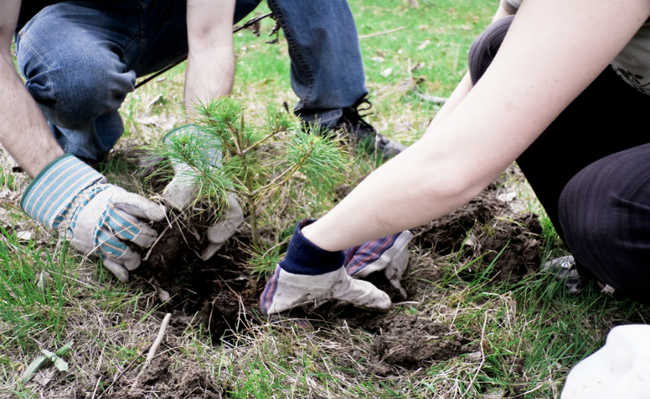The real inspiration behind the elephant-painter: cruelty
Puppies are trained through beatings with logs, bull hooks and sticks with nails
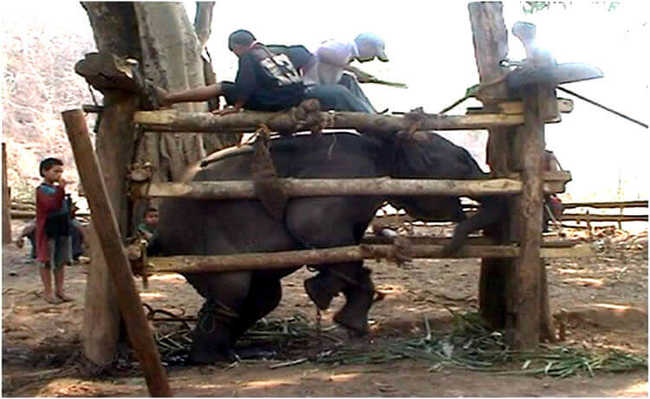
Image: ogreenplanet
In the mountainous regions of northern Thailand, inhabit individuals of a species that tends to attract many curious travelers: elephants.
Those who live on the western side of the planet, as is the case with Brazilians, are not close to large animals like them. And if seeing the different always causes some admiration, then imagine watching an elephant drawing?
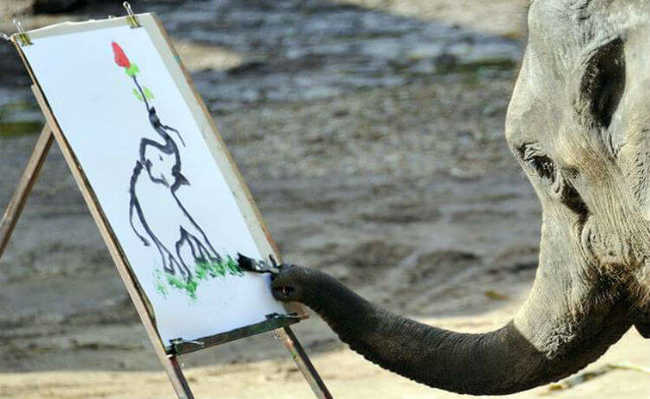
Knowing the admiration and curiosity caused in tourists when they see a different animal practicing a human activity - such as drawing, for example - some people find in animal exploration an opportunity to generate income.
In Thailand, the use of elephants to attract tourists is extremely common.
Tourism exploration
With the modernization of war products and means of transport, elephants, which were previously exploited for these purposes, began to be used in tourism.
With nothing to do with the elephants at home, the mahouts (elephant trainers) began to wander with them through the streets of Bangkok (capital of Thailand) begging for food and renting them to businessmen who took them to tourist centers.
Data
Of the approximately 4,000 domestic elephants, around 2,300 are currently being exploited by the tourism industry, in around 135 elephant camps and other tourist establishments - including theme parks and even sanctuaries - located around major tourist centers for foreigners such as Bangkok, Pattaya, Chiang Mai and Phuket.
There are still 3,700 wild elephants in national parks and wildlife sanctuaries, but living conditions are not so much better than "domestic": the numbers of survivors are shrinking due to loss of habitat for agriculture and to the poisoning done by farmers who take revenge on the mahouts - this is because the latter invade the cultures of the former in search of trunks for the elephant shows.
cruel training
In tourist centers, the main attractions involve elephant rides and animal humanization shows: sitting on stools, following commands, staying in forced positions and even drawing. The problem is that this entertainment hides a cruel reality.
In order to exhibit "docile" and humanized behavior, elephants go through an extensive process of violence.
An elephant, in order to develop, needs to be cared for by the mother at least for ten years, but to facilitate the domestication process, as soon as two years old the babies are already separated from their mothers in an extremely aggressive process.
The trainers tame the elephants by tying their legs in chains and using bamboo filled with nails, they beat the elephant's legs and trunk, leaving them covered in blood.
Training time depends on the animal's response to abuse. Then the elephant is cloistered and beaten exhaustively until it "calms down" and realizes it doesn't have enough power to face its mahouts.

Image: ogreenplanet
Separated early from their mothers and without access to milk, elephants develop bone diseases, which are the main causes of premature death.
These animals, still young, are forced to walk exhaustively through the cities that surround the capital of Thailand to raise money. And they're fed beer and amphetamines for tourists' entertainment.
Those who walk through cities end up injured by being run over and traffic accidents.
elephant painter
Elephant painters are only ready to learn painting after going through the beating process. They are forced to hold the brush by their trunk, an extremely sensitive region as it has many nerve endings.
To train the elephant to move the brush to create patterns of scratches and strokes that look like flowers, trees, or even a drawing of an elephant, mahouts use nails, hooks and logs. If an elephant paints wrong, it is beaten with a bull hook, has its ear pierced by nails and/or is physically assaulted with torso blows to the head.
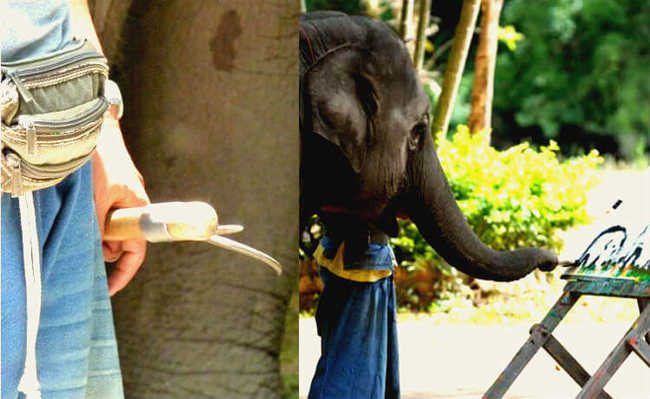
Image: ogreenplanet
During performances, mahouts coordinate the animal's movements with nails hidden behind the ear.
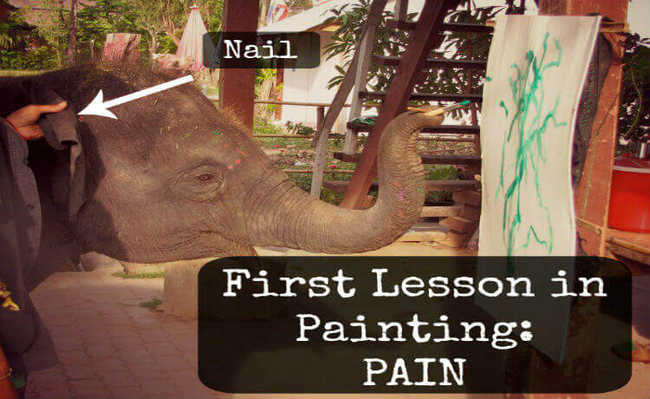
Image: ogreenplanet
More video details about the touristic exploitation of elephants in Thailand can be seen in the PETA video.
What can we do to avoid this suffering?
First thing: avoid elephant tourism at all costs.
Elephants are wild beings and do not exist to satisfy human needs. People may find it "cute", but contact with humans, even "cuddling", stress the animal due to all the history of mistreatment of elephants. Just imagine: they spend several days in a row for several hours carrying people, receiving "stroke" from strangers and physical aggression from the mahouts.
- Be wary of any organization that promotes human contact with elephants, even sanctuaries, as the ideal location for them is in the middle of the jungle.
- Never ride elephants.
- Never use or buy ivory objects.
- Question and inform yourself before supporting any initiative involving wild animals, even organizations with seemingly animal-friendly campaigns.
- Do not fund any kind of mistreatment of elephants, this includes avoiding animal circuses, zoos, etc.
- Find out, campaign, videos, texts and talk to people about what you already know, especially those who support this type of tourism. Share this story.








